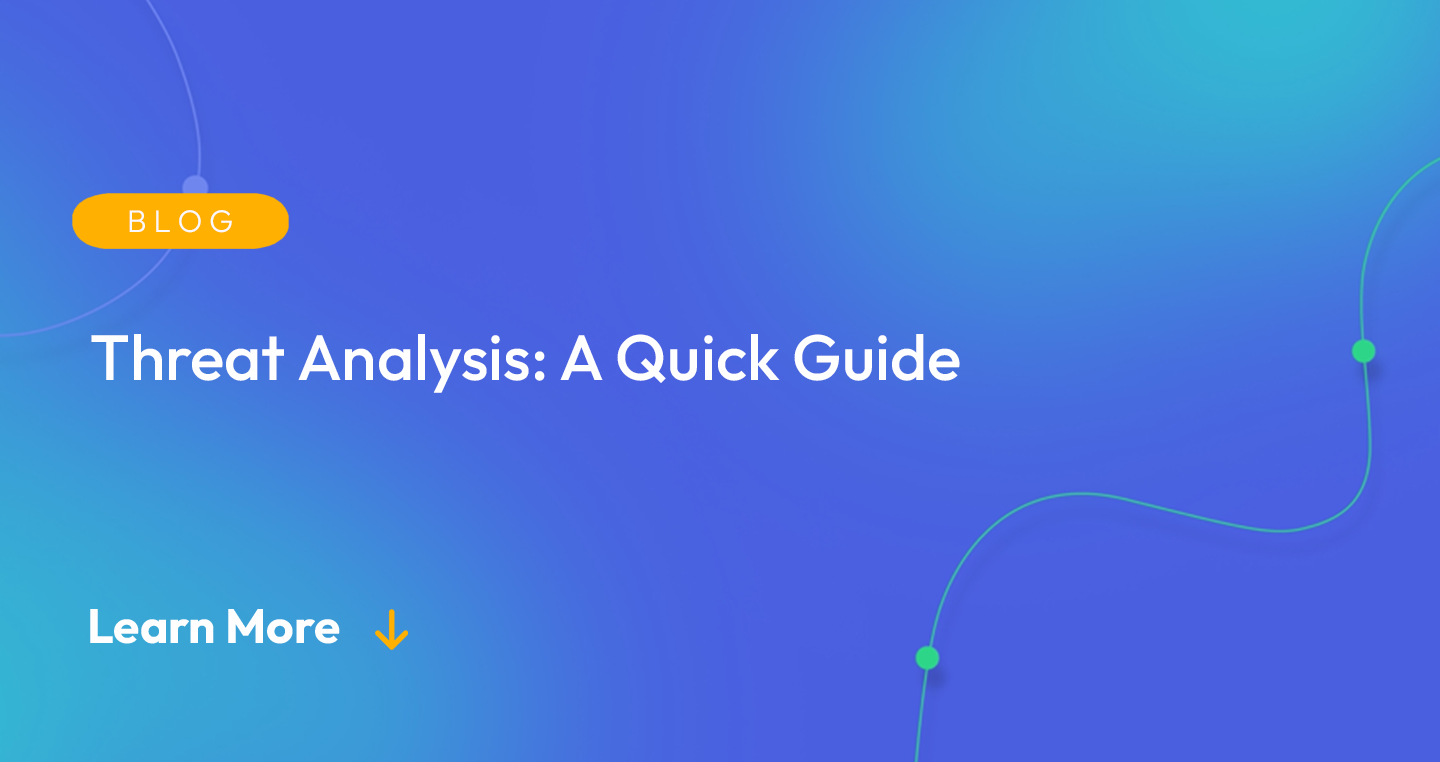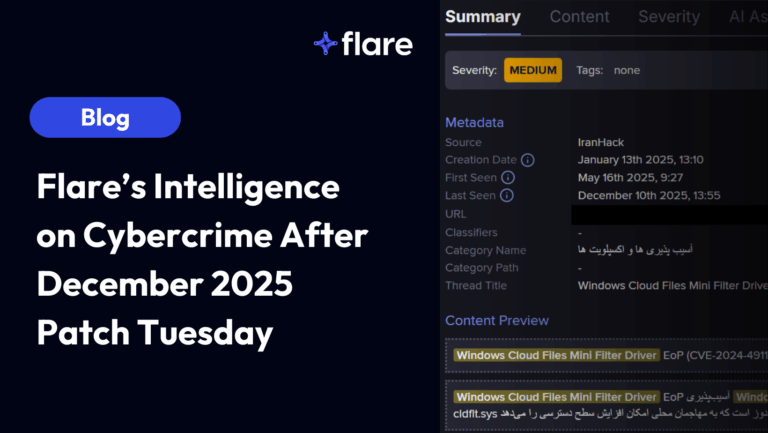
Every day, security teams go head-to-head with threat actors. As data breaches become more sophisticated, security analysts become increasingly overwhelmed. Between new vulnerabilities, malware variants, and attack methodologies, threat intelligence is more important than ever. However, depending on your organization’s unique security and IT stacks, not every new threat may be something malicious actors can use to undermine your data protections.
Threat analysis enables you to identify threats and prioritize remediation activities, giving you more time to focus on critical security tasks.
What is threat analysis?
The National Institute of Standards and Technology (NIST) defines threat analysis as “the process of formally evaluating the decree of threat to an information system or enterprise and describing the nature of the threat.” While to the point, this definition does not give as much insight into how complex threat analysis is.
Threat analysis, also called threat assessment, is the comprehensive set of processes and techniques that an organization implements to build an effective cybersecurity strategy. A threat analysis collects and aggregates information from across your IT environment so that you can:
- Identify current security weaknesses, like vulnerabilities or compromised credentials
- Review current security controls, like segmenting networks or requiring multi-factor authentication
- Determine whether the threat poses a risk to sensitive digital assets
What are the three types of threats?
Not every threat is malicious, and not every threat comes from outside your digital house.
Accidental threats
Most often, threats arise from human error. In code-based environments, mistakes can create threats. Some examples of errors that can create exploitable vulnerabilities include:
- Misconfigured cloud assets, like S3 buckets
- GitHub repositories accidentally set to public
- Credentials compromised during a phishing attack
External threats
Threat actors often target specific companies or industries to gain unauthorized access to systems, networks, and devices so they can steal sensitive information. Some examples of reasons that malicious actors exfiltrate this information include:
- Financial gain
- Espionage
- Social or political beliefs
Intentional threats
Intentional threats are when internal users maliciously access sensitive data for their own benefit and to harm the organization. For example, someone with access to proprietary code could sell it to a competitor.
What are the benefits of a threat analysis?
While threats can lead to data breaches, not every threat will lead to a data breach. The threat analysis enables you to review your current controls so that you can determine whether a threat actor can compromise your IT environment. Threat analysis enables you to use threat intelligence to identify weaknesses and prioritize remediation activities.
Use Context to Evaluate Controls
In security, context means everything. Threat intelligence provides the context. Threat analysis applies that context to your current environment and controls.
For example, technical threat intelligence will tell you about a vulnerability impacting a device in your asset inventory. However, if that device is a workstation that isn’t connected to the public internet, then the threat analysis tells you that malicious actors won’t be able to exploit the vulnerability.
Reduce Attack Surface
While malicious users may change their methodologies, they often use the same attack vector. When you analyze threats, you can reduce your attack surface by filling in security gaps before attackers can exploit them.
For example, if you use dark web monitoring, you can identify compromised credentials. While you may want everyone to reset their passwords, you can prioritize monitoring those accounts for any further suspicious activity.
Reduce Noise
Security teams struggle with alert fatigue because they don’t have efficient detection rules. Their security technologies fire alerts that often lack context. With threat analysis, you can build your threat intelligence into your security technology stack purposefully to create high fidelity alerts that reduce noise.
For example, when your security information and event management (SIEM) tool can correlate vulnerability alerts to threat intelligence indicating attackers actively exploit the weakness, you get high-fidelity detections that reduce incident response attack times.
The Fundamental Threat Analysis Activities
To use threat intelligence effectively, security teams need to create repeatable processes for analyzing threats.
Define Scope
Before you begin collecting threat intelligence, you need to determine what you want to focus on. Since threat analysis should help you detect and respond to incidents more rapidly, you want to make sure that you focus on your most important digital assets.
To define your scope, you should identify your critical assets by focusing on:
- Types of sensitive data that your company collects, stores, processes, and transmits
- System and locations that store sensitive information
- Networks and applications that processes or transmit sensitive information
- Users that access sensitive information
If you place all digital assets that collect, store, process, or transmit sensitive data on the same network, you can limit your scope more effectively. This way, you can focus your threat analysis more efficiently.
Collect Data
After defining your scope, you start collecting data using your threat intelligence feeds. Many security teams struggle because they want a comprehensive data set but don’t have the time to review it.
Some examples of data sources include:
- Paste and dump sites
- Common vulnerabilities and exposures (CVE) list
- Dark web forums
- Illicit Telegram channels
- Infected device markets
The data itself can include any of the following:
- Indicators of Compromise
- Malware variants
- Tactics, techniques, and procedures (TTPs)
- Suspicious IP addresses
Rate Threats
You should have a defined rating system that enables you to communicate how important you think a threat is. The rating system should consider:
- Severity
- Risk
- Potential impact
Defining a risk rating system enables you to categorize and respond to threats in a way that makes sense to your organization’s unique security and IT environment.
Analyze Threats
Once you collect the threat information, you begin the analysis. In some cases, you might use the information to engage in manual threat modeling where you ask “what can go wrong?” and “what are we going to do about it?” These questions help you design potential scenarios, or tabletop exercises, for how threat actors might exploit a threat in your environment. Your security team treats the scenarios as through they were a real security incident, testing their detection, investigation, and response times.
Actionable Intelligence for Threat Analysis with Flare
Flare’s platform enables you to easily locate, understand, prioritize, and act to remediate exposures arising from high-risk external threats. With Flare, you can seamlessly monitor hundreds of sources in one location, eliminating the time-consuming processes that make operationalizing threat intelligence difficult.
With Flare’s wide coverage and automated monitoring, you can dramatically reduce the time and costs arising from the threat analysis process.
Try a free trial and get started in just 15 minutes.





